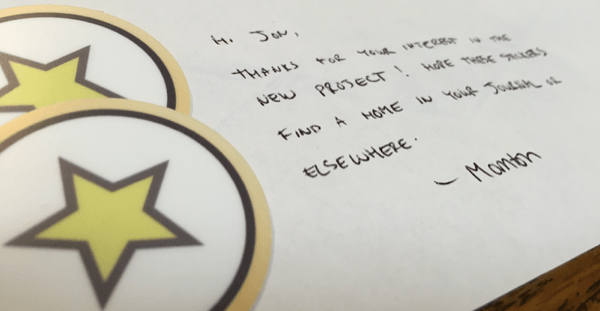The New Setup
March 7, 2016
Starting a new job working from home gave me the opportunity to evaluate exactly what I wanted from my work environment. I knew I was getting a new Mac (13” Retina MBP, as you do), but I also knew that I needed a new monitor and standing desk.
I worked for a few weeks using nothing but a 15” rMBP on my desk at home, and found that my right wrist was starting to hurt after only a few hours. I’ve had run-ins with RSI before, and had to wear a brace and adjust my posture while typing to relieve it. While my desk works well for the occasional work day at home, spending a few weeks sitting at it proved to me that it’s insufficient for serious extended periods of concentrated work.
However, I was ruined after looking at the beautiful retina screen for as long as I did. At my previous job I used an Apple Thunderbolt Display, which was beautiful and functional, but had lower DPI than the MacBook display, and was not very adjustable. The Thunderbolt could power the MacBook, and acted as a hub for anything that I needed to plug in, like network cable or external hard drive. The Thunderbolt is also $1,000. Given that I look at text all day, and sometimes into the night, I wanted a display that equaled my MacBook, had adjustable height, and wouldn’t break the bank. After researching a few alternatives, I settled on the Dell Ultra HD 4K Monitor P2415Q 24-Inch Screen LED-Lit Monitorat less than half the price.
I’ve read about Dell’s Ultrasharp line before, and always came away with the impression that they were very high quality. The 24” screen has a resolution of 3840 x 2160, the same as the next step 27”, which means the pixels are at a much higher density. After using this one for the past week, I can say that the screen itself is superb. There are no dead pixels, text is crisp and clear, colors are sharp, and the matte finish means that I’m not inadvertently staring at my reflection when working in a dark color scheme.
The screen adjusts to a height level with my eyes, so I’m not hunched over or looking down while working. It also rotates 90°, which I tried briefly and discarded. Just too weird.
While I’m perfectly satisfied with the screen, I do miss quite a few of the niceties of the Thunderbolt Display. There are no integrated speakers, no FaceTime camera, no ethernet port, and no power adaptor for the MacBook. It’s just a monitor. It does have a USB hub, and apparently the display port is capable of carrying audio, but neither feature is integrated into the Mac enough to be useful. For example, if my Time Machine drive was plugged into the monitor when the monitor went to sleep, the drive would be lost to OS X and I’d get that annoying alert about not ejecting a drive. If I need to do video or audio conferencing I’m either going to have to take the Mac out of it’s Twelve South BookArc or I’m going to need to plug in a USB camera, microphone, and speakers like it’s 2003.
I mentioned that the display port can carry audio. The monitor has a speaker jack on it, and I at first plugged in my desk speakers into that, but when I did the Mac lost all capability to control the volume output to the speakers. Hitting F11 or F12 showed an image on the screen indicating that the Mac was just shrugging it’s shoulders. Nothing it could do. Plugging the speakers back into the Mac and setting the headphone jack as the default audio out port solved this issue. I had to remind myself… it’s just a monitor.
The last part of the puzzle is still being shipped. I ordered an adjustable standing desk similar to a VariDesk, but made by a Canadian company for, again, about half the cost. I have the 32” Rodelco ADR on the way, and I imagine I’ll once again be standing for about three-quarters of the day. I spent several months standing while working at my previous job, and I miss that more than the Thunderbolt display. I’ll post again after I’ve worked with it for a week or so with my first impressions.
The 13” is a big change from the 15”, but I don’t feel like I’m missing anything. The 15” seemed an odd size to me. Too big to comfortably use apps full screen, but too small to be able to see more than two windows at the same time. The 13” is perfect for concentrating on a single task, is super light and easy to carry, and has enough power to push the incredible number of pixels on the Dell screen. So far I’m pretty happy with my new setup.

